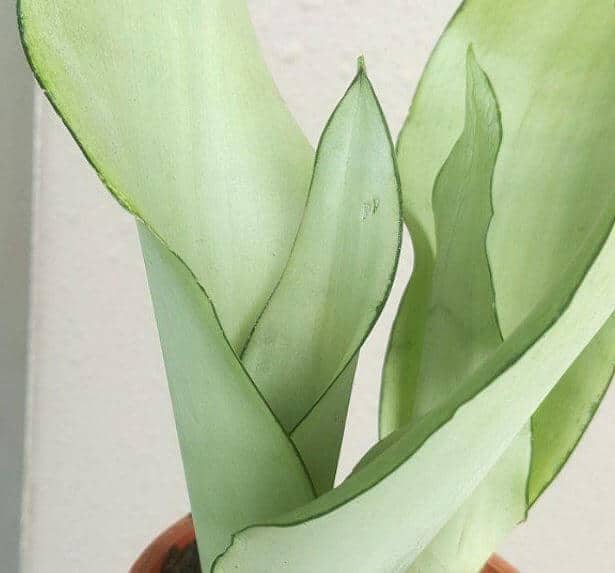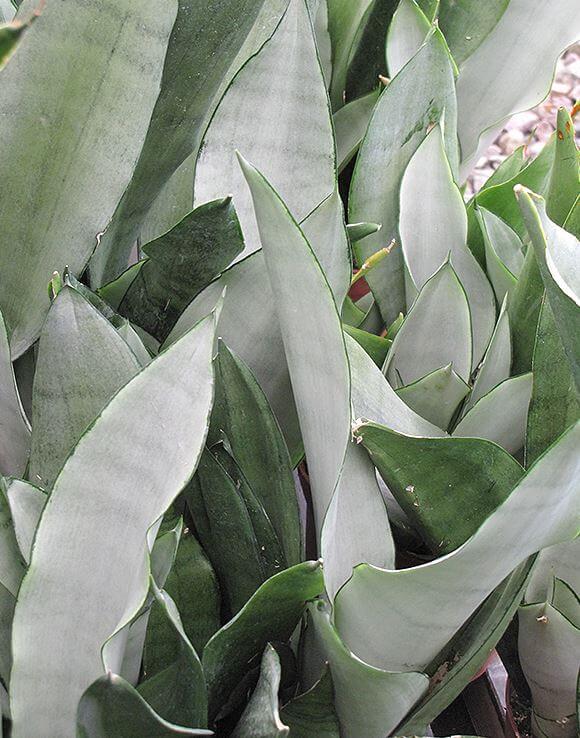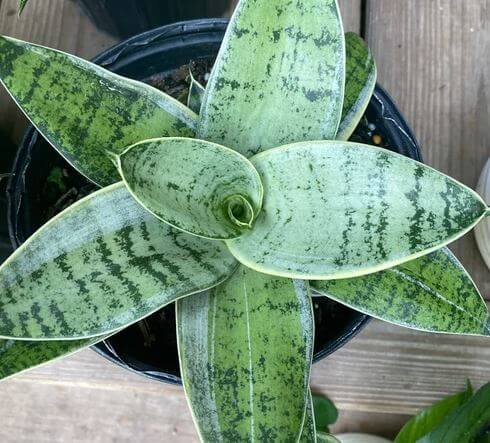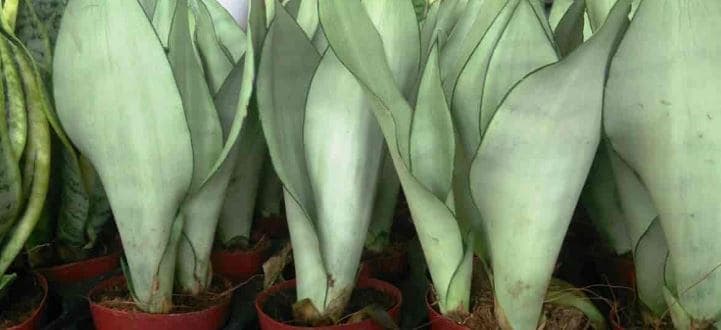Last Updated on May 19, 2023 by a Friendly Gardener
With its gorgeous lines and splendid coloring, the silver snake plant is a popular ornamental choice across households. What adds to the appeal is that this tropical plant is extremely hardy—you couldn’t kill it if you tried, making it the perfect starter plant for beginners!
Requiring only occasional watering and low light and being resistant to most insects/pests and drought, the leaves of this plant can retain their freshness and lovely form even after weeks of neglect.
Easy to grow, easy to care for, and highly adaptable, silver snake plants are an easy way to introduce some greenery to your living space or start your garden.
Here’s everything you need to know about silver snake plants and silver snake plant care.
About the Silver Snake Plant

The snake plant goes by many names, such as viper’s bowstring hemp, Saint George’s sword, and the quirky mother-in-law’s tongue!
Scientifically, the snake plant is known as Dracaena trifasciata (earlier known as Sansevieria trifasciata) and is indigenous to West Africa’s tropical stretches, where it holds cultural and religious significance.
The snake plant is an evergreen flowering plant that belongs to the Asparagaceae family, and you’ll find several cultivars with varying coloration and needs—some of the most popular include Hahnii, Laurentii, Twisted Sister, rhino grass, Bantel’s Sensation, the silver queen snake plant, and the silver flame snake plant.
All varieties feature long, straight, stiff leaves that resemble swords. These leaves can grow between six and eight feet tall, and the most common coloration sported by these plants is the combination of a green base and a yellow border.
Flowers are rare, but when they do bloom, they bloom in a lovely white during the spring, which is the growing season for the plant. When it comes to USDA hardiness zones, snake plants are most suited to zones 9 to 11.
Apart from improving the aesthetic appeal of the space, research has shown that silver snake plants can also improve indoor air quality, removing pollutants such as benzene and formaldehyde.
However, it should be noted that ingesting these plants is toxic to dogs and cats, inducing diarrhea and vomiting, so factor this in when finding a spot for your snake plant.
Silver Snake Plant Care

As mentioned earlier, caring for the silver snake plant is pretty straightforward, making it an excellent choice for those freshly sprouted green thumbs! You can grow the plant in containers or directly in the soil in your outdoor garden.
Cared for in the right manner, you can extend your snake plant’s lifespan from 10 to 25 years! The below pointers will help you prolong your silver snake plant’s life.
Light Requirements
Silver snake plants do well in both full sunlight and dimly lit corners, but the ideal light situation is continuous, indirect light, with occasional exposure to direct sunlight.
These plants are slow growers, but placing them in an ideally lit spot will help quicken growth and vice versa.
On days when you want to give your silver snake plant some direct sunlight, don’t move the plant too quickly from low light to bright light, as this can induce shock in your plant (yes, that’s a legit thing). Always make the move gradual, spread out over a week, ideally, while also adjusting the watering schedule accordingly.
Temperature and Humidity Requirements
Native to areas that receive warmth and sunshine throughout the year, silver snake plants prefer conditions above 50℉, with temperatures between 70℉ and 90℉ most preferred by the plant.
Exposing the plant to frost will kill it; ensure that you keep it away from cold spots, doors, and windows during the winters when the plant is dormant.
Humidity around the plant should ideally be between 30% and 50%. Fortunately, this is the average level of humidity in most houses, but if the air is drier inside your house, you can up the humidity levels with a humidifier, group plants, or place your potted plant in a shallow tray filled with water and pebbles.
Soil and Fertilizer Requirements

Silver snake plants require soil that is loose and drains well, as they’re highly susceptible to root rot. Sandy soil with a low peat content is ideal—too much peat can be counterproductive, making the soil more compact and causing issues with drainage and rehydration.
All-purpose cacti potting mixes are perfect if you don’t want to make your own mix.
In addition to a well-draining potting mix, it’s recommended that you use a terracotta pot with drainage holes, as terracotta is a more permeable material than materials like plastic, allowing any excess water to drain through and prevent waterlogging.
Additionally, make sure that you get rid of any excess water standing in the pot’s tray.
If you want to feed your silver snake fertilizer, do so only during the growing season with a mild cactus fertilizer and never in winter.
You could, alternatively, use a balanced slow-release liquid fertilizer (10-10-10 or 20-20-20) during the growing season; just ensure that you dilute the fertilizer (equal parts water and fertilizer) before applying it to the plant.
Water Requirements
Silver snake plants should be watered sporadically in the winter months (once a month or even once in two months is ideal). During the rest of the year, let the soil dry completely between watering days, which works out to once in two weeks. Avoid wetting the leaves while watering.
Since they’re drought-resistant, these plants don’t need much water to thrive. Remember, given how vulnerable to root rot these plants are, it’s always better to under-water than overwater; they’ll survive the former very easily but perish at the slightest sign of the latter.
Propagating and Repotting

Propagating is best done during spring and summer. You can either divide the rhizomes the leaves grow directly from or use leaf cuttings.
If you’re opting for the latter, use cuttings that are about a couple of inches in size, and plant them vertically, an inch deep in appropriate potting soil. You can also use seeds, though that is a more difficult option.
When it comes to repotting, do so during spring, replacing old soil with fresh soil. Since snake plants are slow growers, you may only need to repot once every three years or so.
The Bottom Line
A silver snake plant can make a great, easy addition to any garden, and while the above tips will help your plant grow better, you can just as easily leave the plant in a corner and forget about it until you have to do the occasional watering!
Conversely, if you’re highly invested in your plant’s well-being, remember not to go overboard with the feeding and watering.
If you notice any common pests or insects on your plant (identifiable by signs such as drooping, curling, and yellowing leaves and foul-smelling soil), a good insecticide, along with improved airflow, lower humidity, and lesser water, will help rid the plant of its invaders.

